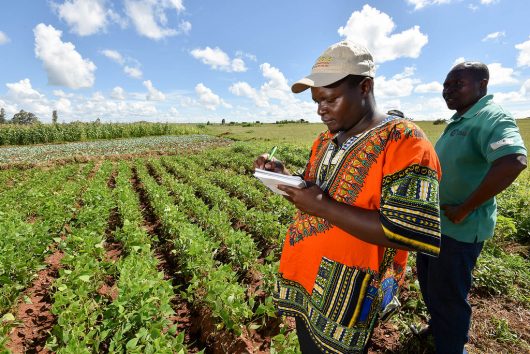Hunger in Mozambique
 Mozambique, a country in East Africa along the coast of the Indian Ocean, separates mainland Africa from Madagascar and is home to 34 million people. Unfortunately, 19 million of these individuals—approximately 65% of the population—live below the poverty level, making poverty and hunger significant problems in Mozambique.
Mozambique, a country in East Africa along the coast of the Indian Ocean, separates mainland Africa from Madagascar and is home to 34 million people. Unfortunately, 19 million of these individuals—approximately 65% of the population—live below the poverty level, making poverty and hunger significant problems in Mozambique.
Current Challenges
- Mozambique ranks 107th out of 127 countries, with a score of 27.5 on the Global Hunger Index, which highlights the seriousness of the situation.
- Hunger in Mozambique is a significant challenge, with 54% of people unable to afford a nutritionally adequate diet, leading to additional issues within the population; for example, around 31% of the population is undernourished.
- The situation is especially dire for children under 5; 3.6% of them are acutely malnourished or wasted and 36.7% are suffering from stunted growth. Moreover, 6.6% of these children do not survive to their fifth birthday, with malnutrition being one of the primary causes.
Underlying Factors
- Climate- Agriculture provides income for about 70% of Mozambique‘s population and is highly vulnerable to climate-related events such as droughts, floods and cyclones, which are very common in the country. In 2024, El Nino events precipitated extreme drought in some parts of the country, which, combined with the cyclone, above-average rainfalls in some parts and floods, has destroyed crops. The adverse events have impacted around 20 million people nationwide, leading to a 24% increase in food prices. This hike has made essential items less affordable and contributed to rising hunger among the population.
- Armed Conflict- The ongoing conflict during the last decade has led to the destruction of infrastructure and the displacement of at least one million people. This has resulted in a vulnerable population that is sinking further below the poverty line, facing increased hunger and malnutrition and struggling with inadequate shelter. Poor sanitation and hygiene have contributed to the emergence of diseases, while children’s education has also been adversely affected. These issues have significantly impacted both the displaced population and the host communities.
- Global Economic Crisis- The pandemic and the Russian-Ukrainian conflict have worsened conditions, increasing commodity prices in the country. This has heightened poverty and hunger among the population in Mozambique.
Helping Hands
Many organizations are working and striving for change in Mozambique. Two are the World Food Program (WFP) and Action Against Hunger.
- World Food Program- The WFP assists the population in various ways. It provides school meals and nutrition support, mainly targeting pregnant women and children in affected areas. Additionally, the WFP offers livelihood support through seeds, agricultural kits and disaster warnings and thus plays a vital part in efforts to reduce hunger in Mozambique.
- Action Against Hunger- Action Against Hunger has been active since 2021, assisting communities during disasters, like cyclones and droughts, through cash transfers, food supplies and health care. The organization also helps build resilience by supporting agriculture, fishing and reconstructing damaged infrastructure.
Path Forward
The challenges in Mozambique require urgent and sustained action. The situation is complex, but by promoting sustainable agriculture practices, providing immediate food assistance and building resilience in communities through disaster preparedness tools, we can help create a healthier and more secure future for the people of Mozambique. Achieving zero hunger and lifting communities out of poverty will only be possible through the collaborative efforts of the government, aid organizations and the international community.
– Maria Waleed
Photo: Flickr
Updated: November 26, 2024
